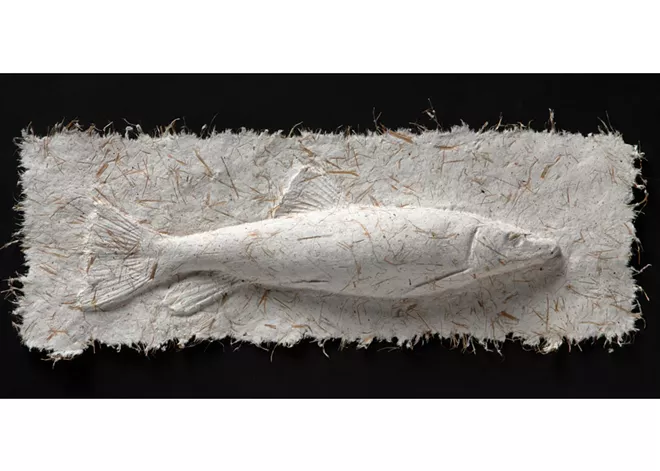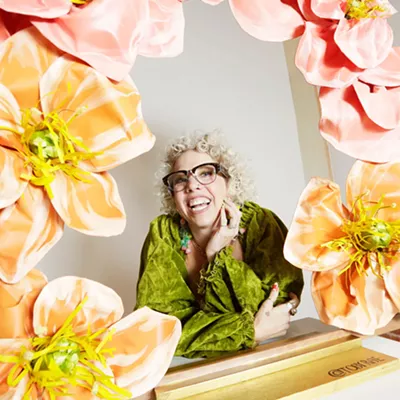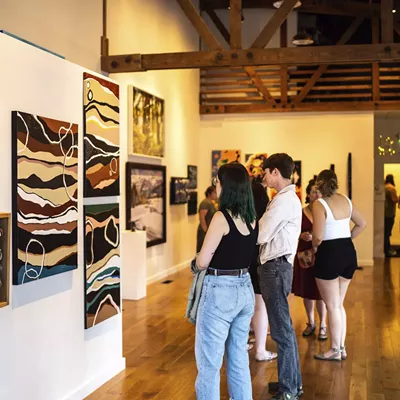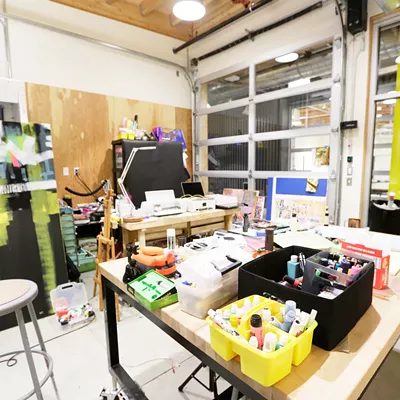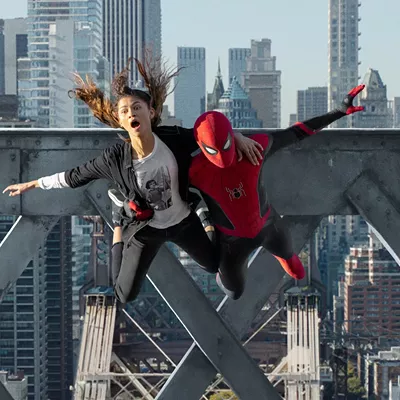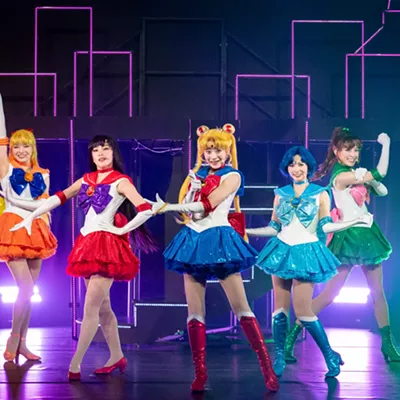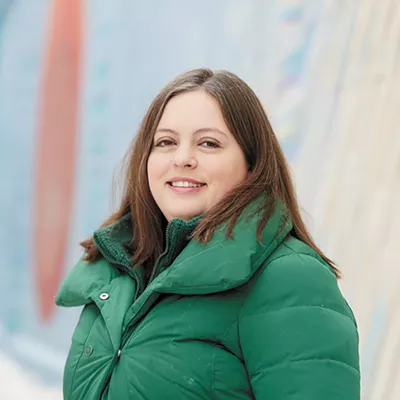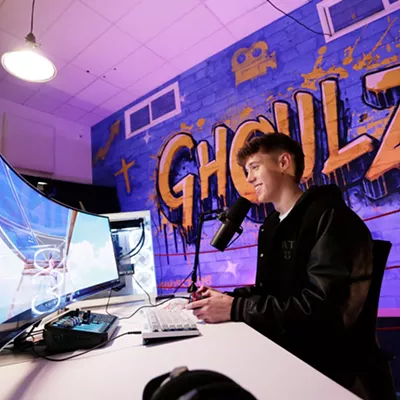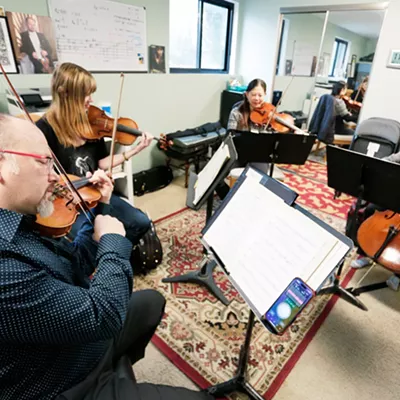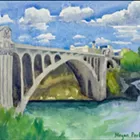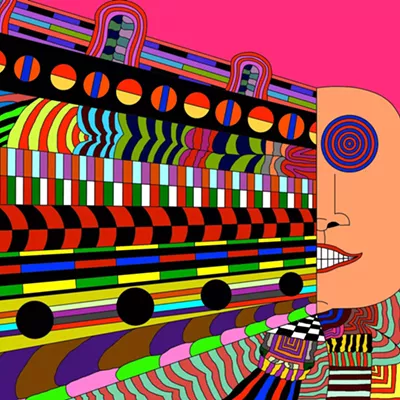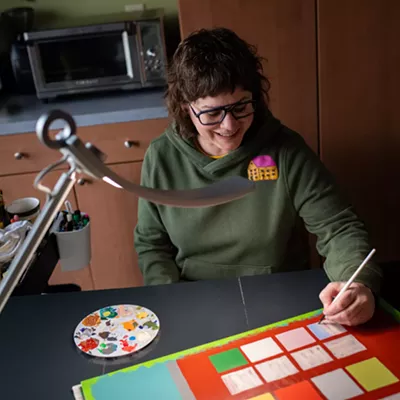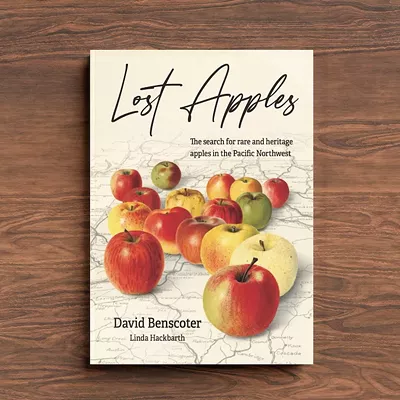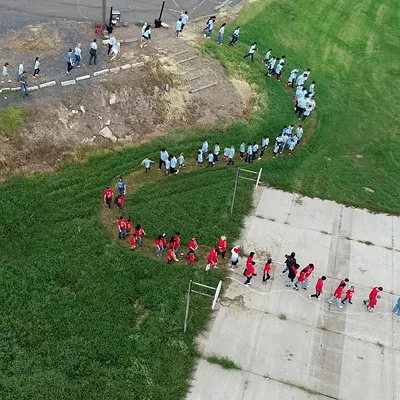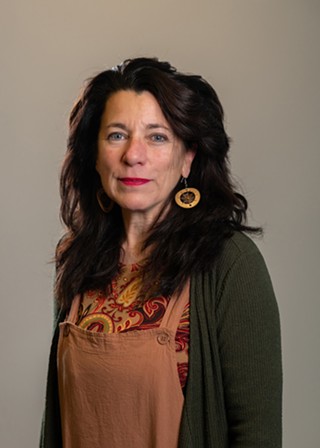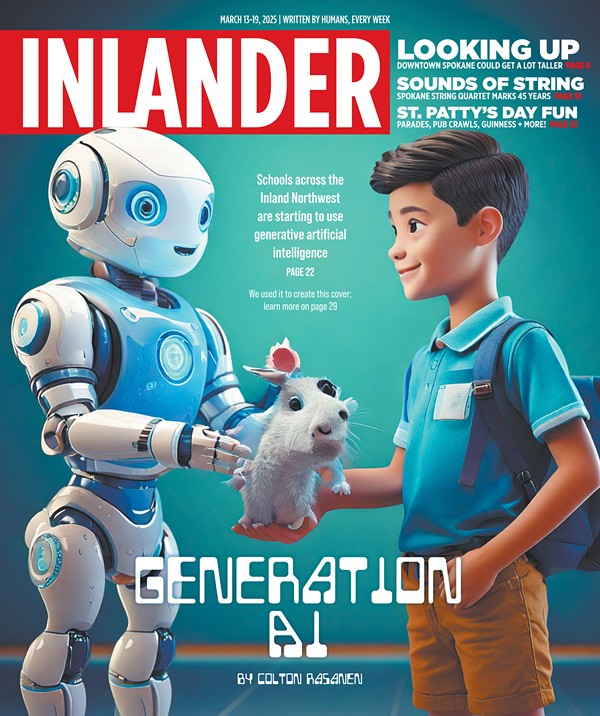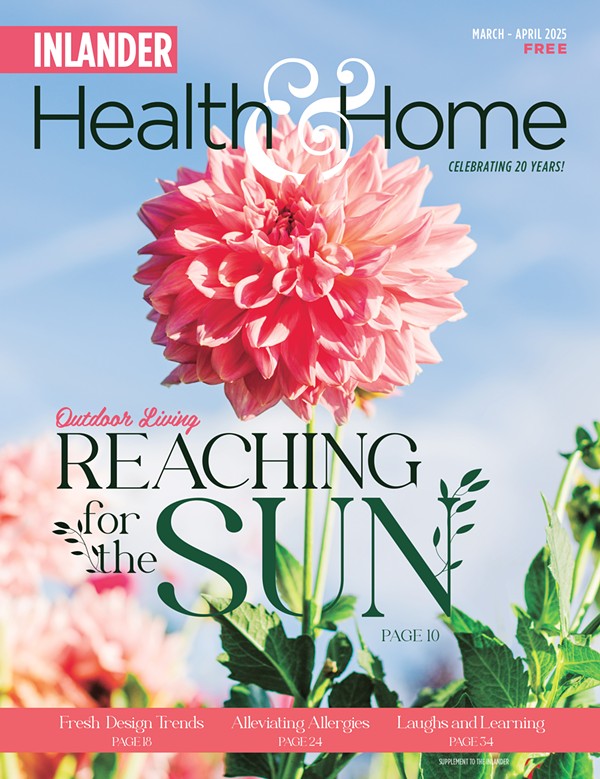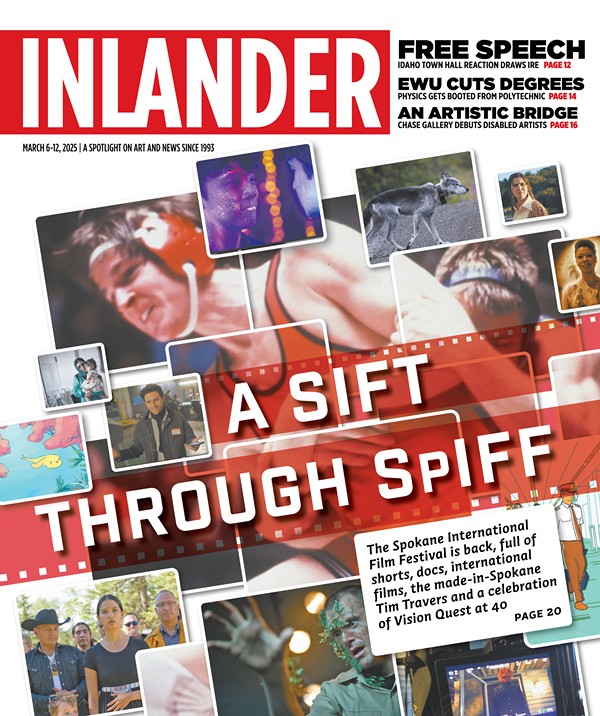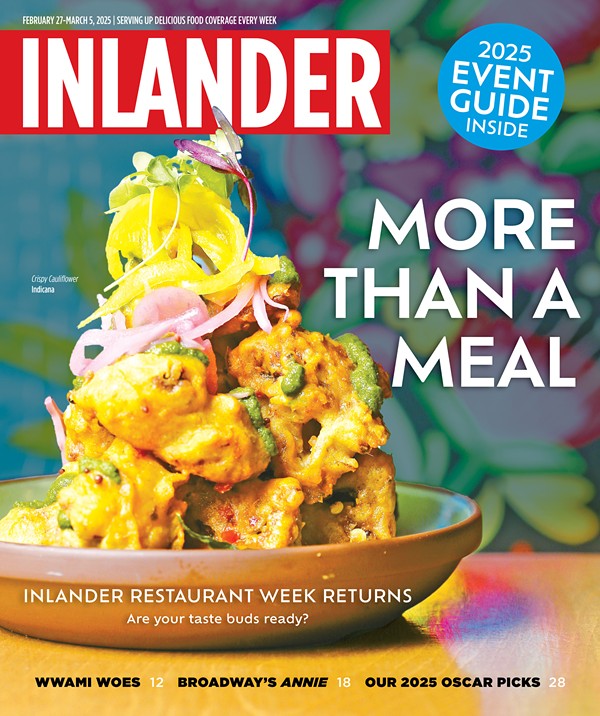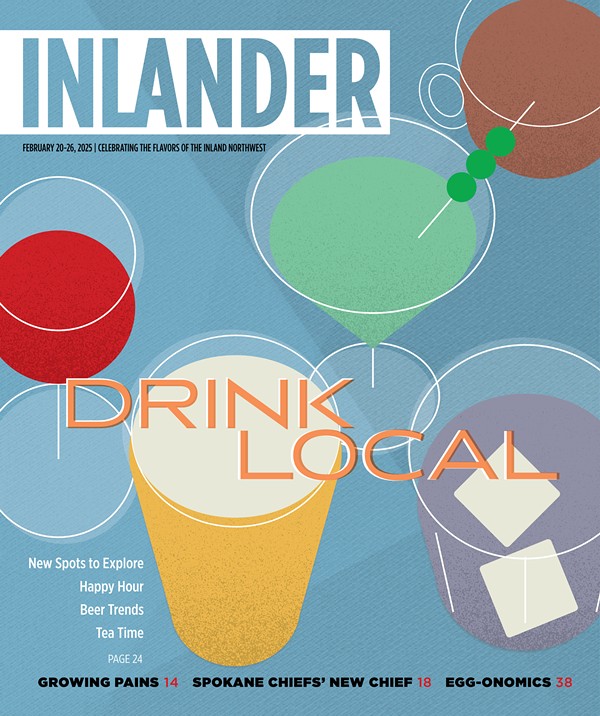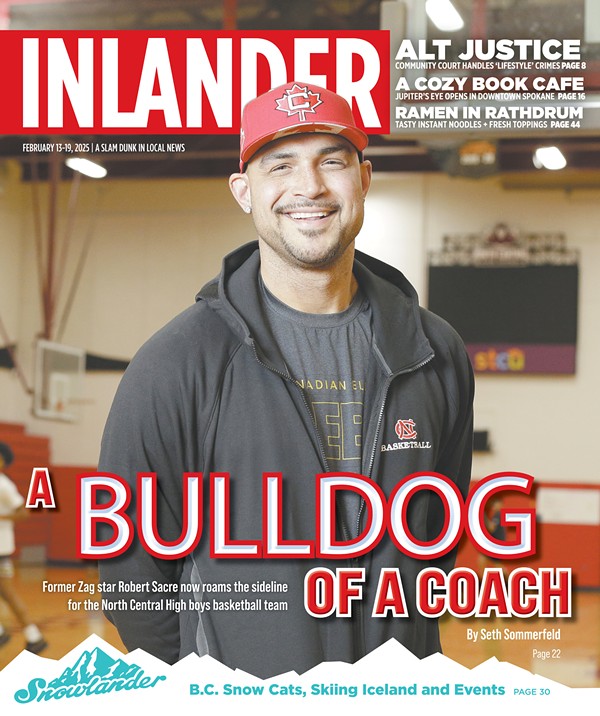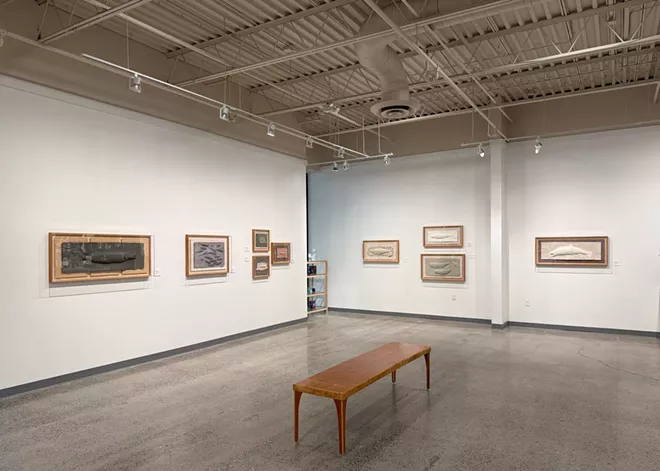
It's fitting that the new home for the recently reopened Moscow Contemporary art gallery is in a mall, that unique retail institution that continues to reinvent itself. Petting zoos, movie theaters, medical offices, theme parks, casinos and a handful of art galleries have all more recently found their way into America's malls.
"Why was downtown made vacant?" asks Moscow Contemporary founder Roger Rowley, reflecting on how the arts have been a vital economic, cultural and educational driver in the region. "Because all the downtown stores had moved to the mall."
That includes the gallery out of which Moscow Contemporary evolved.
In 1986, the University of Idaho relocated its Prichard Art Gallery to a historic Main Street building between Fourth and Fifth Streets. Rowley served as Prichard's director from 2004 through 2021, until the university's budget issues forced its closure. Unfazed, Rowley formed a nonprofit, rallied the community to raise funds, and persevered in the same spot with a similar program of art exhibitions, classes and community events.
In December 2023, however, the building's owners evicted Moscow Contemporary pending a cash offer for the building which — ironically — now houses a new art gallery, The Pierian, affiliated with New St. Andrews College.
Rowley says he would have liked to keep Moscow Contemporary downtown but couldn't wait, especially if a new space required substantial remodeling. For example, not long after announcing that the Prichard would close in 2021, the university bought another downtown building that it's still remodeling to house both an updated Prichard Art Gallery and an Idaho Vandals retail spot.
"We're just like, OK, we need to find something new; we need to get open; we need to ... move and get it done," Rowley says.
When one door closes, another opens, as the saying goes.
A year and a day since launching its last exhibit downtown and its first exhibit inside Palouse Mall (featuring artist Reinaldo Gil Zambrano), Moscow Contemporary has come back stronger in many ways, Rowley says.
In its new spot, the gallery has already had 5,000 visitors since reopening in October 2024, compared with 10,743 total visitors in 2022 while it was downtown and 12,800 total in 2023.
Rowley says that 150 people showed up for the Thursday, Jan. 16, opening of the current exhibition, Lonnie Hutson's "Swimming in Circles," which is more than any opening night tally of the most popular exhibitions during Rowley's tenure at either the Prichard or Moscow Contemporary in its former location.
Even though the Palouse Mall venue offers less back-of-house space — the single closet is stacked floor-to-ceiling with tubs for classes and workshops, which have more than doubled in the new location — it has a strong upside, Rowley says.
Easy access from the parking lot. Everything's on one level. High ceilings. Abundant running water and heat. A retail-minded landlord who was all-too-happy to install track lighting. And the space offers both increased vehicular traffic — the mall is on the busy highway between Moscow and Pullman — and foot traffic.
"As a display space for art this has certain advantages over downtown," says Rowley, describing the gallery's "very long glass front, with two walls set back three feet from those windows."
The windows add mall-facing presentation space and a large area for projections, like the video loop in the current exhibit showing a closeup of vibrant red and olive green sockeye salmon swimming. And swimming. And swimming.
"So in terms of that moment of engagement with someone who has no real experience with an art gallery, we can quickly grab their imagination and get them curious," Rowley says.
When the gallery is open, there's no door to walk through, he adds.
"And so it's just that simple matter of capturing somebody conversationally to inquire about art, about this space, and a number of them that go, 'Wow, this is really cool,' because it's so unexpected." ♦
Moscow Contemporary • 2012 W. Pullman Road, Moscow (Palouse Place Mall) • Open Tue-Fri noon-5 pm, Sat 11 am-4 pm • moscowcontemporary.org • 208-301-5092
CATCH AND RELEASE
There are many ways to capture a fish but none quite like how artist Lonnie Hutson does it. Instead of casting a line in the water, Hutson casts paper into fish-shaped sculptures. How? He lays damp sheets of handmade paper over a mold of the fish he wants to recreate three-dimensionally then lets the paper sheets dry. Casting!
Hutson's life-size cast paper sculptures are paradoxical. His use of paper and focus on threatened and endangered fish species highlights the fragility of our ecosystem. Yet the rock-like texture of the paper, and his use of earth-toned pigments and incorporation of micaceous materials suggest permanence, rather like fossils.
Fish are ubiquitous — Hutson's fish can be found as far north as Alaska and as far east as the Great Lakes — and outnumber humans worldwide. And while the artist can cast multiples of each fish form, his use of materials makes each sculpture preciously unique. Many sculptures incorporate materials from its corresponding fish's native habitat or even the fish itself, like the shimmery scales of the inconnu that Hutson blended into the paper for his cast of the freshwater whitefish also known as the sheefish.
But why fish — particularly Northwest natives like the mighty salmon, diminutive sculpin or elusive and behemoth sturgeon?
"The whole aquatic ecosystem is easily measured by the native fish population," says Hutson, a lifelong outdoorsman who spent 40 years guiding fishing and whitewater rafting trips throughout Idaho and the Grand Canyon.
"If it's healthy, then that's a good sign, and if it's not healthy, then there's something going on with that ecosystem." And that affects everybody, he adds.
Hutson will give a free gallery talk from 2-3 pm on Saturday, Feb 1. Then on Saturday, Feb. 22, from 1-5:30 pm, he'll conduct a workshop in the art of paper casting fish ($120, registration required).
— CARRIE SCOZZARO
Lonnie Hutson, Swimming in Circles: Precarity & Resilience of Native Northwest Fish • On display through March 29

